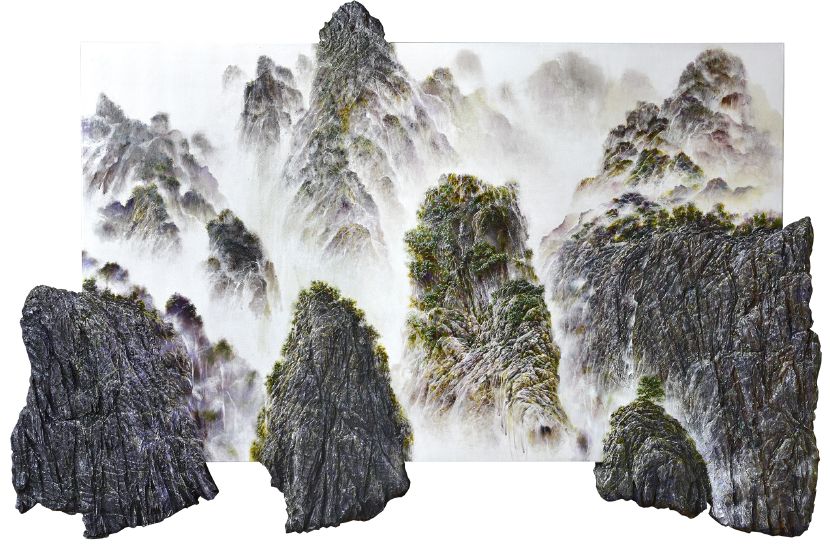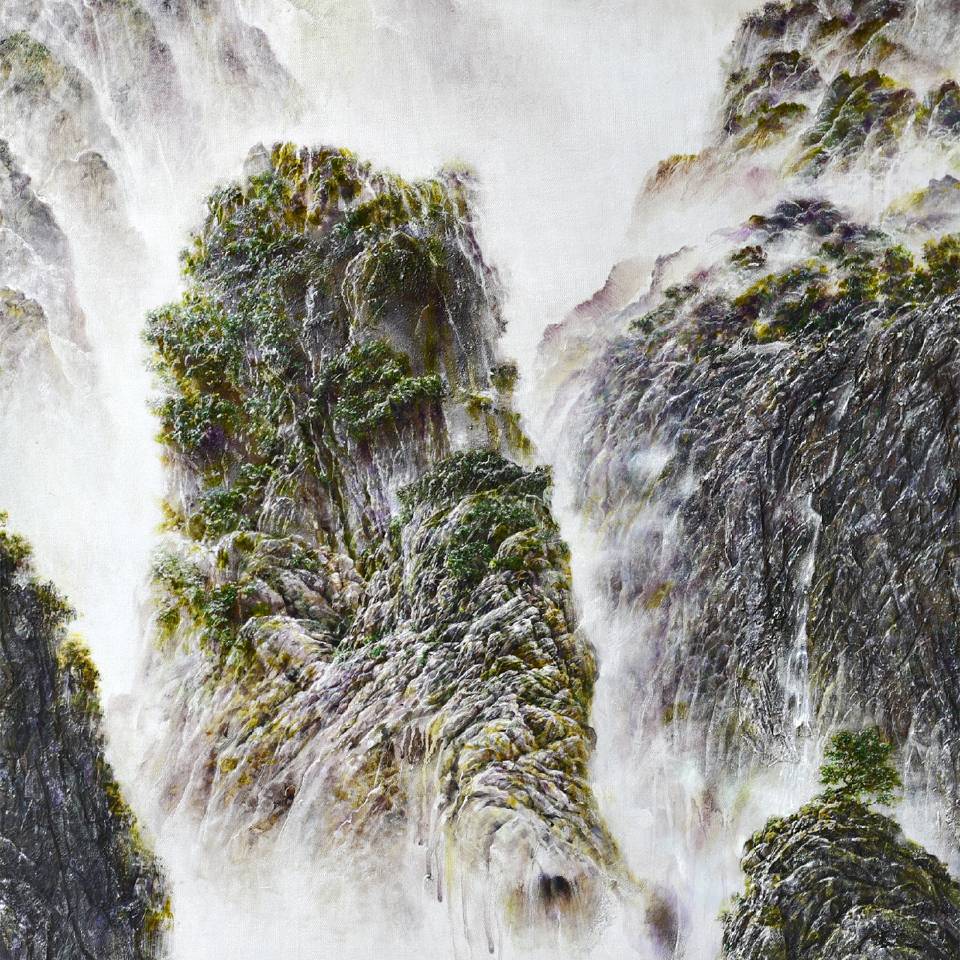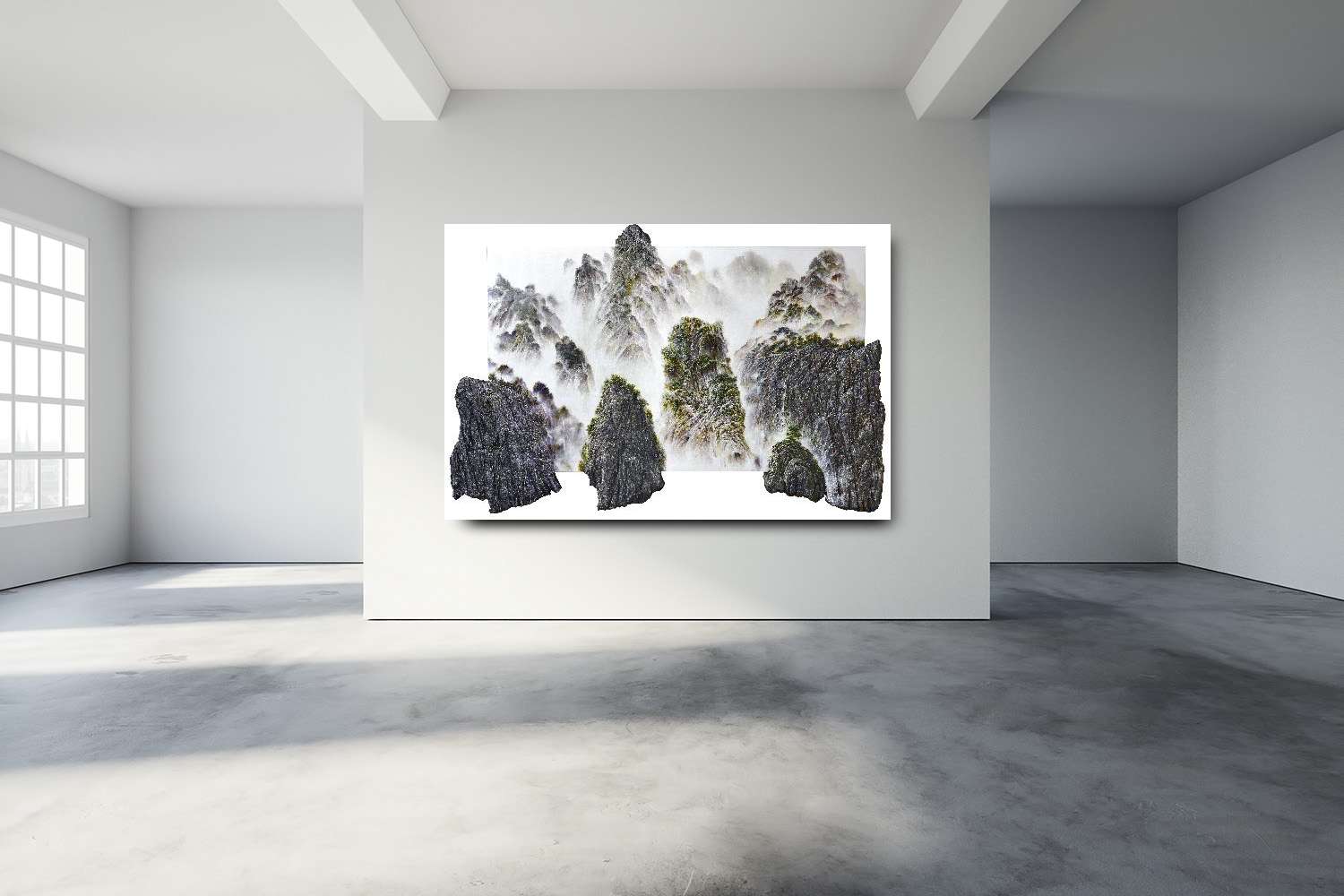作品敘述
作品本身以有機形式的不規則二維度的邊界變化,象徵物件未完成的建構及可擴張性,或是引導出畫面的張力或動力方向,此外,以「微浮雕」的概念為畫面三度空間支應平面繪畫縱深與立體空間衝突矛盾的素材,利用顏料及基材間的厚度落差來凝固生命中所見到的片斷思考。
當油畫顏料在基材上堆疊的那一刻開始,「體」就不斷的產生,由平面虛擬實境視覺展開,立體及厚度相互作用造成的視覺混合如同新印象派的並置混色一般的新感觀刺激,進而帶入的是平面繪畫的雕塑性及三度空間的平面維度探討的可能性,空間的前後軸線,水平的四方延展,也造就了不規則的畫面段落,也隱喻了觀者想像的畫外空間。
在於基材厚度提升的條件之下,所呈現的是量和體積、面積觀感上的質感變化,呈現的是一種觸覺性的條件,是一種不同於平面,強烈的視覺衝擊性的繪畫型態,並且在不同的視角及不同的光線之下,提供多樣貌的視覺經驗。
應用現代材料,以東方傳統繪畫構成的人文特色來呈現承受的感知,透過不同的文化形式及風格抒發,也許我想傳達的是在當代全球化的環境中,時勢所趨之下,一種「西學東用,東學西用」的普遍文化現象。
The work itself uses irregular two-dimensional boundary changes in organic forms, symbolizing the unfinished construction and expandability of the object, or guiding the tension or dynamic direction of the picture. In addition, the concept of "micro-relief" is used as the three-dimensional space of the picture Supporting the conflicting and contradictory materials between the depth of the two-dimensional painting and the three-dimensional space, the thickness difference between the paint and the base material is used to solidify the fragmented thinking seen in life.
From the moment the oil paints are stacked on the base material, the "volume" is continuously built up. It starts from the visual development of the flat virtual reality. The visual mixture caused by the interaction of the three-dimensional and the thickness is like the juxtaposition, which offers a newly sensual stimulation as color mixing of neo-impressionism. It brings in a discussion of possibilities such as a sculptural nature on plane painting, a plane dimension in a three-dimensional space, the front and rear axes of space, and the horizontal four-way extension, which create irregular picture paragraphs, and also hint an off screen space in a viewer’s imagination.
By increasing the thickness of the base material, my work presents a texture change in volume, size, and area perception, offering a tactile condition, which results in a painting style that has a strong visual impact and provides a rich visual experience by different angles and lights.
I use modern materials and humanistic characteristics of oriental traditional paintings to present the perception of tolerance through different cultural forms and styles. Perhaps what I want to convey is that in the trend of contemporary global environment, a kind of universal cultural complementary phenomenon of "learning from the west and applying it to the east, learning from the east and applying it to the west".


